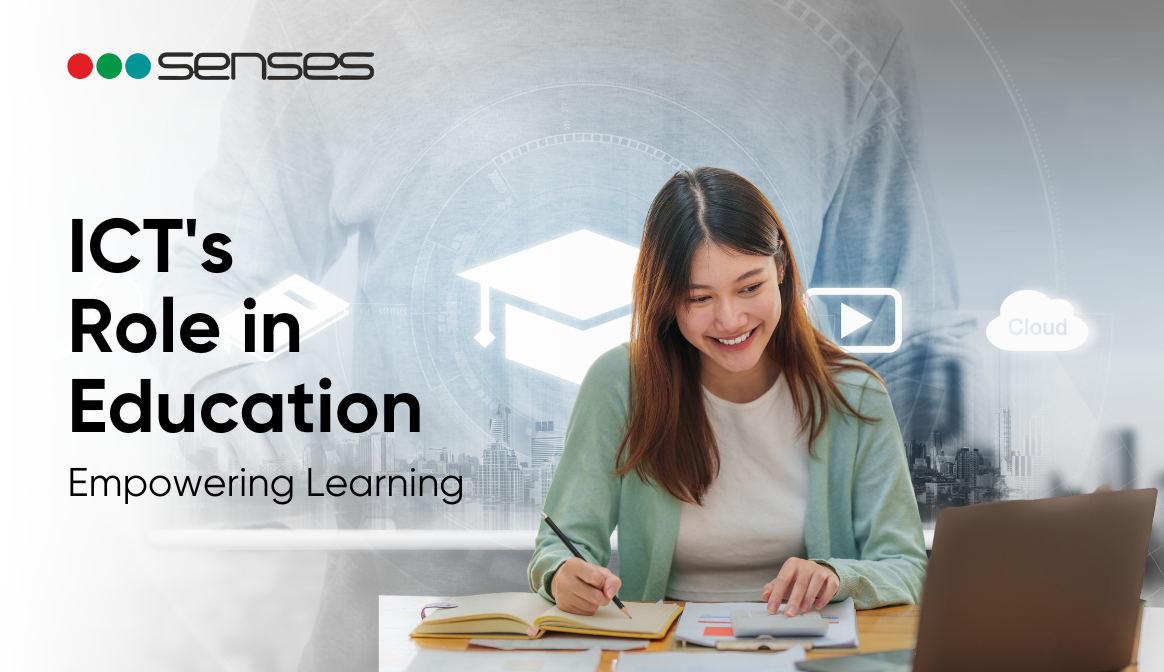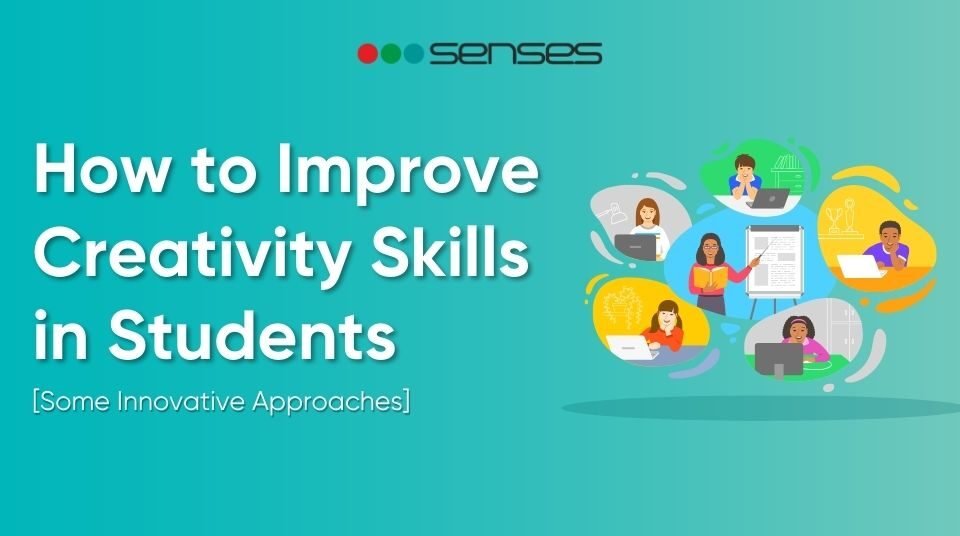Revolutionizing Learning: The Impact of ICT in Education

The rise of ICT has significantly transformed the education sector across the globe. After the Covid-19 pandemic, this transformation has gained pace like never before.
Information and Communication Technology (ICT) in education isn’t just about upgrading to the latest gadgets; it’s about transforming how teachers teach and students learn.
As a teacher, it is essential to understand how ICT is transforming education, how you can use it to improve your teaching, and the importance of ICT in education.
Without understanding the role of ICT in education, you wouldn’t be able to provide modern education to your students and help them to thrive in this highly competitive world.
By the end of this article, you will have complete knowledge about ICT, including its importance and tools that you can use in your classroom. Before diving into the topic, let’s understand the meaning of ICT in education.
What is ICT in Education?
Information & Communication Technology (ICT) in education means using digital tools and technologies to enhance teaching and learning experiences. ICT includes the use of computers, software, internet, AI, VR and other digital technologies.
Integrating these modern digital tools into your teaching process can significantly improve your teaching and make learning more enjoyable.
From the above definition, you have understood what ICT is in education, but before moving forward, you should know the importance of ICT in education.
Importance of ICT in Education?
Many successful people worldwide, including Elon Musk, APJ Abdul Kalam and Bill Gates, have highlighted the importance of ICT in the learning process.
The following lines by David Warlick, the author of “Classroom Blogging” and many other best selling books, underscore the importance of ICT in education. –
“We need technology in every classroom and in every student and teacher’s hand, because it is the pen and paper of our time, and it is the lens through which we experience much of our world.”
This underscores the necessity of integrating technology into everyday learning environments.
The most significant advantage of ICT is its ability to address and overcome the limitations inherent in traditional teaching methods.
It helps teachers like you provide modern education without any problem to assist and guide your students to pursue their dream careers. It also helps you and your students to cope with our rapidly changing world.
For these compelling reasons, the National Education Policy 2020 has explicitly embraced the need for ICT in its new 5+3+3+4 education model, providing educators with a clear path to modern teaching methods.
Apart from these, there are a lot of benefits of using ICT in educational practices. Let’s explore some of them –
Advantages/Benefits of ICT in Education
- Enhanced Learning Experiences –
By using ICT in education, you can significantly enhance the overall teaching and learning experience. Modern ICT tools such as AR/VR or Smart Boards make the learning process not just more engaging and interactive, but also more enjoyable.
Multimedia presentations, virtual simulations, and educational software allow students to learn through different sensory pathways, catering to varied learning styles.
- Personalized Learning –
As a teacher, you must know that every student has a different way of learning or understanding a concept.
For some students reading is enough to understand concepts while for some students both writing and reading are essential. Additionally, for some students, looking at pictures or watching videotapes helps.
However, such personalized education is not possible in the traditional education system.
Information communication technology makes this impossibility possible. Now, with the help of ICT, you can teach the students in the classroom in a way that is convenient for them.
Tools like interactive smart boards can help you make learning much more personalized. For example, by using smartboard AI features, you can translate your notes into multiple languages in real-time, eliminating language barriers.
- Skill Development –
Regularly using ICT tools in the classroom automatically increases digital literacy among the students. These newly developed digital skills open thousands of future opportunities for your students, helping them pursue careers in their desired fields.
Therefore, it’s essential that you integrate ICT tools into your teaching process. This will not only enhance the learning process for your students but also prepare them for the digital future.
- Increased Accessibility –
Due to the emergence of highly advanced ICT tools in education, the necessity of attending classes physically has been erased. Now, students can easily access your lectures from the comfort of their homes.
This is the era of online or distance learning. This mode of education is not just a trend, it’s a revolution that is reshaping the future of education, with a growing number of students preferring this learning mode.
After the pandemic, the demand for distance education has rapidly increased. The main reason behind this is the flexibility that distance education offers to both students and teachers like you.
- Highly Interactive & Collaborative Learning –
One of the best advantages of applying ICT in learning is to turn classrooms into highly interactive and collaborative learning environments. Learning becomes a much more enriching experience with students and teachers dynamically interacting with each other.
Picture this: a smart whiteboard in your classroom. This innovative tool empowers you to conduct engaging and interactive sessions. For instance, in a history class, you could display maps and timelines on the whiteboard, allowing students to touch and interact with them.
It’s akin to having a digital canvas that everyone can contribute to in real time!
So, these are the 5 top benefits of ICT in education. Now, here are the top 5 ICT tools that you can use to enhance your teaching game, making it much more interactive and practical.
Challenges in Integrating ICT in Education –
Integrating ICT into education is not an easy task. You will face many challenges during the implementation process. Therefore, Dr. Ruben Puentedura developed the SAMR model to smoothly integrate technology into education to enhance the quality of it.
SAMR stands for Substitution, Augmentation, Modification, and Redefinition. It is a straightforward model that offers a clear framework for teachers to integrate technology into their classrooms.
ICT Tools in Education
Information and communications technology tools have completely changed the face of education, offering a wide range of adaptable solutions. From basic software packages to applications designed for computers, interactive whiteboards, and tablets, these tools can be tailored to various educational settings.
Here are the top 5 ICT tools for education that you can use in every classroom
1. Interactive Whiteboards:
Interactive whiteboards such as SENSES Edge can transform ordinary lessons into dynamic and interactive experiences. You can display multimedia content, write notes in digital ink, and allow students to interact directly with the material, making learning visually engaging and participatory. Interactive whiteboards are the most influential ICT tool in education compared to other ICT tools.
2. Learning Management Systems (LMS):
Zoom, Moodle, Blackboard & Canvas, among others, are pivotal in the realm of distance learning. These LMS are not just tools, but effective platforms that teachers and educational institutions rely on for their operations.
LMS makes distance education much smoother and more effective. They are highly flexible, cost-effective and user-friendly. It helps both students and teachers to be organized.
3. Video Conferencing Tools:
Video conferencing tools now play a vital role in the educational setting, especially in most classrooms today with hybrid and remote learning. These allow virtual classrooms wherein students can participate live in lectures, initiate discussions, and interact with their peers and instructors for real-time engagement.
This means bridging the gaps between physical locations so that no student would be denied the right to education.
4. Virtual Reality (VR) Tools:
Virtual Reality (VR) tools such as Oculus Rift provide an immersive learning experience by transporting students into fully interactive 3D environments.
Such technology will allow you to present abstract and complex concepts through meaningful simulation-from the sheer interstellar vastness of space to human anatomy.
5. E-Books and Online Libraries:
Ebooks and online libraries offer an invaluable resource for students, granting instant access to various texts and scholarly articles.
This kind of digital format of study material not only eases carrying loads of books but is also equipped with quick navigation tools and search capabilities, amplifying efficiency in study activities. Besides, ebooks often have adjustable text sizes and integrated dictionaries, making them a flexible tool for various learning and surroundings.
Integrating SENSES Smart Whiteboard to Enhance ICT Learning
As we delve deeper into the importance of ICT in revolutionizing education, it becomes clear that the right tools can dramatically enhance the effectiveness of these technologies.
One such unique tool that stands at the forefront of this integration is the SENSES Smart Whiteboard, also known as the Senses Intelligent Interactive Panel.
It’s not just a whiteboard, but a powerful tool designed to revolutionize the way you teach.
We have designed the SENSES Interactive Panel, especially for teachers like you who want to take education to the next level.
It’s a tool that empowers students to achieve their full potential, making learning more engaging and effective.
To help you, we have added some advanced features to the panel, such as –
Integrated Artificial Intelligence. You can do thousands of things using AI to make your lessons more engaging. You can gamify your lessons or translate your notes into more than 20 Indian languages.
Apart from these, there are other features as well
- 4K Ultra HD Display
- Anti-glare display
- Text/shape recognition
- Quick Search
- 3D shape Integration
- Toughened Glass Solution
- 50,000 hours life cycle
And many more………
Now, have a look at what MIT Pune has to say about the SENSES Intelligent Interactive Panel –
SENSES enabled classes have helped us further develop our personal interest in technology and how we can use it. it is aiding our classes, with all its abundant resources. We still feel new to all of it, but it’s been a good journey!
We are pleased to help our students by integrating videos, images and a variety of content at one given point of time. We appreciate SENSES for making our classroom teaching-learning experience so smooth and interesting!
More than 8,000 schools & 70,000 educators hold the same opinion and experience as MIT Pune.
If you also want to experience the power of SENSES, Schedule a DEMO right now.
We will bring a Senses Interactive panel to your school or home for a DEMO!
You can also watch our YouTube video as well.
Frequently Asked Questions (FAQs)
The significant impact of ICT in education is increased student engagement, resource accessibility and personalized learning, which automatically improves students’ academic performance.
ICT tools include interactive whiteboards, computers, tablets, educational software, and online learning platforms.
ICT aims to increase students’ IT literacy, modernize teaching, improve accessibility, and tailor educational experiences.



